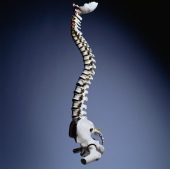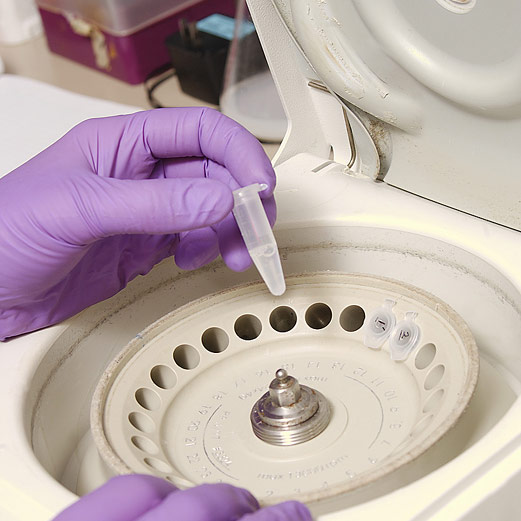
THURSDAY, Sept. 19 (HealthDay News) — For most children who otherwise might need surgery for scoliosis — curvature of the spine — having them wear a brace helps prevent their condition from worsening to the point where an operation is needed, a new study says.
In fact, the study was stopped early because of the positive results from bracing, when researchers found that 72 percent of the children using the brace improved and surgery wasn’t needed, compared with 48 percent of the children not using one.
“Bracing significantly decreased the progression of patients who are at high risk for progression to the threshold where surgery would be indicated,” said lead researcher Dr. Stuart Weinstein, a professor of orthopedic surgery at the University of Iowa.
“The study also showed that the more the children wore the brace — the longer their brace hours — the better the chances of success in avoiding surgery,” he said. “We found children who wore the brace more than 13 hours a day have a significantly better outcome in preventing surgery than wearing it for less hours.”
Many types of braces exist for kids, according to the Scoliosis Research Society. Successful treatment requires regular physical exams by an orthopedic surgeon, a well-fitted brace that’s replaced when outgrown, as well as patient cooperation and family support, according to the society’s website.
For the study, Weinstein’s team randomly assigned 116 children to wear a brace or not. In addition, another 126 children were given the choice of wearing a brace or not. Patients with braces were told to wear them at least 18 hours a day.
High-risk patients are those with a spinal curve between 20 degrees and 40 degrees, and whose spines are still growing, Weinstein said. For these children between 10 and 15 years old, bracing should begin as early as possible, he added. The brace is designed to prevent the progression of the curve to around 50 degrees, which is when surgery is indicated.
It’s not known why some children’s scoliosis didn’t progress without a brace, nor why some children’s scoliosis progressed while wearing a brace, Weinstein said.
Bracing has been around since 1948, but doctors still disagree whether it is helpful, and up to now there hadn’t been a study done to support or refute its value, he said.
The report was published online Sept. 19 in the New England Journal of Medicine, to coincide with the presentation of the findings at the annual meeting of the Scoliosis Research Society in Lyon, France.
“This confirms our suspicion all along that bracing does change the outcome of scoliosis in adolescents,” said Dr. Harry Shufflebarger, director of the division of spinal surgery at Miami Children’s Hospital. He was not involved with the new study.
The problem is that there is no way of telling who needs a brace and who doesn’t, he said. “You can find a high-risk population and offer it to all of them with the explanation that some of you guys don’t need a brace, some of you do and we can’t differentiate.”
Another doctor, Dr. Eugene Carragee, a professor of orthopedic surgery at Stanford University School of Medicine, agreed that it’s not clear who actually benefits from bracing.
There are many types of spinal curves, including upper and lower spine curves, double curves and curves that tilt right and those that tilt left, said Carragee, who wrote an accompanying journal editorial.
“The study doesn’t have enough people to be able to break it out to say which of these curves are going to do better with a brace,” he said. “It is very likely there is a subgroup for whom the brace is highly effective, but there is also a subgroup where it’s not effective,” Carragee said.
“The research still needs to be done to separate the curves that are braceable from the curves that are not,” he said.
More information
To learn more about scoliosis, visit the U.S. National Library of Medicine.
Copyright © 2025 HealthDay. All rights reserved.

